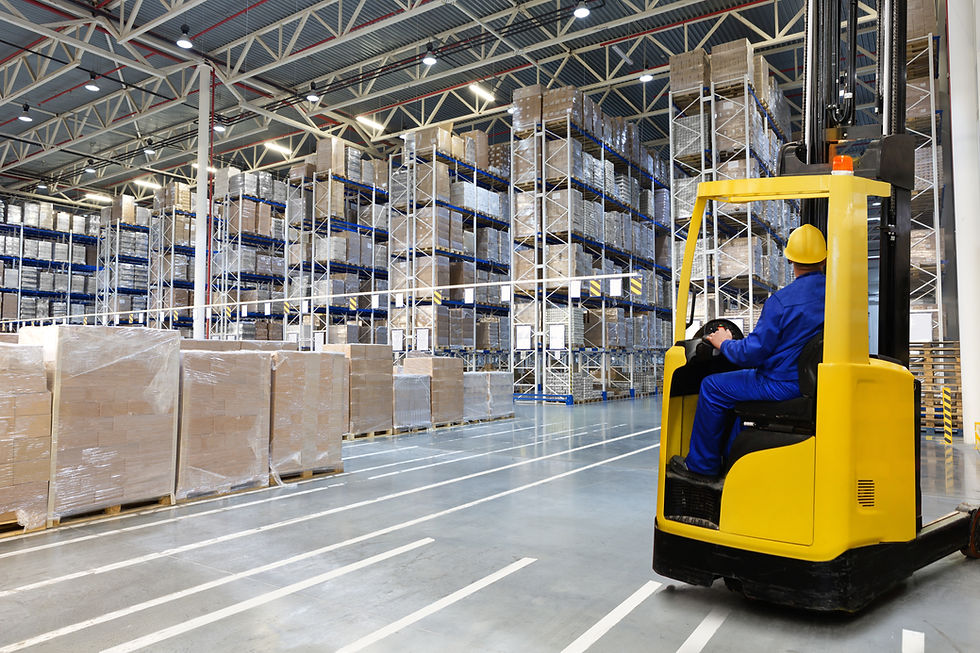Understanding the Costs Involved in Cold Chain Logistics
- Zero Degrees Logistics

- Dec 9, 2024
- 3 min read

Cold chain logistics is vital for transporting temperature-sensitive products such as pharmaceuticals, food, and chemicals. While its importance is clear, managing a cold chain comes with significant costs. Understanding these costs is essential for businesses aiming to optimise their supply chains while maintaining the quality and integrity of their products. This blog explores the key cost factors in cold chain logistics and offers insights on how to manage them effectively.
1. Specialised Equipment and Infrastructure
One of the primary cost drivers in cold chain logistics is the need for specialised equipment and infrastructure. Refrigerated transport vehicles, insulated packaging, and temperature-controlled storage facilities are all essential components of a reliable cold chain.
Refrigerated vehicles (reefers) and trailers require constant maintenance to ensure their cooling systems function effectively.
Cold storage facilities involve high operational costs due to energy consumption, maintenance, and advanced temperature monitoring systems.
Investing in or partnering with a logistics provider that maintains well-equipped and efficient infrastructure is necessary but comes at a price.
2. Energy Costs
Energy consumption is another significant cost in cold chain logistics. Keeping goods at specific temperatures throughout their journey requires consistent power supply for refrigeration units, whether in vehicles or storage facilities.
Energy prices vary depending on the region and the source of power. Companies looking to cut costs should consider investing in energy-efficient refrigeration systems or exploring renewable energy sources for their facilities.
3. Packaging and Insulation Materials
Temperature-sensitive goods often require specialised packaging to maintain stability during transit. The cost of insulated containers, thermal blankets, and phase-change materials (PCMs) can add up, especially for products requiring ultra-low temperatures.
Reusable packaging solutions may offer long-term savings, but their initial costs are higher. Companies should evaluate the trade-off between single-use and reusable materials based on their shipping volumes and sustainability goals.
4. Labour and Training
Handling temperature-sensitive goods requires skilled labour. Employees must be trained to manage refrigeration systems, monitor temperature conditions, and handle products with care. The cost of training programs, along with wages for skilled staff, contributes to the overall expense of maintaining a cold chain.
Regular training is necessary to keep employees updated on industry standards and to minimise the risk of human error, which can lead to costly product losses.
Compliance with regulations governing cold chain logistics can also incur costs. This includes maintaining proper documentation, implementing quality control systems, and ensuring adherence to local and international standards such as Good Distribution Practice (GDP) or Hazard Analysis Critical Control Point (HACCP).
Non-compliance can result in penalties, product recalls, and reputational damage, making it critical for companies to allocate resources to meet these standards.
Advanced technologies such as IoT-enabled sensors and blockchain solutions for real-time tracking and traceability are transforming cold chain logistics. While these technologies offer significant benefits in terms of efficiency and transparency, they also involve upfront costs for implementation and ongoing maintenance.
Conclusion
Understanding the costs involved in cold chain logistics is crucial for optimising operations and ensuring product safety. From specialised infrastructure and energy consumption to packaging, labour, compliance, and technology, multiple factors contribute to the overall expense. By carefully evaluating these costs and investing in efficient solutions, businesses can balance their budgets while maintaining a high standard of service. Collaborating with an experienced cold chain logistics provider can also help minimise costs through optimised processes and shared resources.





Comments